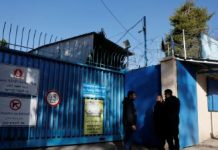ISLAMABAD, AUG 18 (DNA) – As Provincial Assemblies have just completed second parliamentary year, a PILDAT comparative assessment of performance of Pakistan’s 4 Provincial Assemblies shows that Provincial Assembly of Khyber Pakhtunkhwa has outranked other Provincial Assemblies in passage of most legislation.
Provincial Assembly of Khyber Pakhtunkhwa has passed 59 laws in second year, followed by Provincial Assembly of the Punjab which passed 41 laws. Provincial Assembly of Sindh has passed 24 laws while Provincial Assembly of Balochistan lags behind the other three by having passed only 8 laws during second year.
Comparative analysis on passage of laws as seen in each Provincial Assembly shows that except Balochistan Assembly, which has passed fewer bills than first year, there is an increase in legislative activity across other 3 Assemblies.
When looking at total number of laws passed by each Assembly during the two parliamentary years that concluded in August 2020, KP Assembly also leads ahead of other Assemblies by 89 total laws passed in two years. It is followed by Punjab Assembly that has passed a total of 58 laws in two years. Provincial Assembly of Sindh has passed a total of 36 laws while Balochistan Assembly has only passed 19 laws in total in two parliamentary years.
Comparative analysis on legislative activity contrasts sharply with budget allocation to each Assembly per member during the year. Balochistan, which has passed the lowest number of laws in two years has the highest budget allocation per member at about 23.1 million PKR. Sindh Assembly budget allocation per member stands at about 13.6 million PKR. Provincial Assembly of Khyber Pakhtunkhwa budget allocation per member is a little under 9.4 million PKR, while Punjab Assembly budget allocation per member stands at about 5.1 million PKR.
Compared to the first parliamentary year, each Provincial Assembly has held fewer sittings during the second year compared to the first year, presumably because of coronavirus pandemic. Provincial Assembly of Sindh leads in the second year by holding maximum number, 68 sittings, compared to other Provincial Assemblies. Its sittings, however, have decreased by 25%. It is followed closely by Punjab Assembly that has met for 67 days during the second year, with a decrease of 13% in sittings from first year. KP Assembly ranks third by holding 52 sittings, with a decrease of 15% from first year. Balochistan Assembly has met for only 33 days during the second year, with a decrease of 35% from sittings in first year.
Combined total of sittings held by each Assembly in two years also places Sindh Assembly ahead of others by having held 159 sittings, followed by Punjab Assembly that has met for 144 days in two years. KP Assembly has held a total of 113 sittings in two years. Balochistan Assembly has again retained its trend of falling behind the other 3 Assemblies by meeting just for 84 days in two parliamentary years.
However, number of sittings by each Assembly does not project the full picture. It is also important to analyse the duration for which each Assembly meets in terms of the hours put in by assemblies. A comparative analysis of time spent by each Assembly per sitting shows that the hours spent by each Assembly per sitting do not vary much between Assemblies. Rarely does a sitting held by an Assembly last more than 2.5 hours on average.
That said, total number of working hours spent by each Assembly during second year has also seen a decline from year one. However, Sindh Assembly leads in terms of having spent most working hours, over 168, during the second year. Punjab Assembly has spent a little over 140 hours in sessions during the second year. KP Assembly has met for a little over 113 hours during the year while Balochistan Assembly has held sessions for a little over 111 hours.
Attendance of each Chief Minister in each Assembly has declined considerably during second year. It appears that Chief Ministers have lost interest in Assembly proceedings as did the Prime Minister in Parliamentary proceedings. Chief Minister Balochistan, Jam Kamal Khan, leads others by attending 33% sittings of Balochistan Assembly. His attendance has decreased by 28 percentage points from 61% in first year. Chief Minister Sindh, Syed Murad Ali Shah, has attended 31% sittings of Sindh Assembly with a decline of 10 percentage points from his attendance in Assembly in first year.
At a distant third is Sardar Usman Ahmed Khan Buzdar, Chief Minister Punjab, who has only attended 7% sittings of Punjab Assembly with a decline of 9 percentage points from 16% attendance in first year. Chief Minister Khyber Pakhtunkhwa, Mr. Mahmood Khan, has only attended 6% sittings of the KP Assembly, with a decline of 9 percentage points from his attendance in KP Assembly during first year.
Leaders of the Opposition in each Provincial Assembly have shown better interest in Assembly proceedings than the Chief Ministers. Leader of the Opposition in the Balochistan Assembly has attended the highest, 70% sittings of the Assembly, while Leader of the Opposition in the Punjab Assembly, Mr. Hamza Shahbaz, has the lowest attendance of 10% during the second year, which is also because he is in prison for the past many months.
Despite its crucial importance, Budget sessions remain the most neglected in Provincial Assemblies. Not only that required reform has not taken place in improving and strengthening budget process in Assemblies, days allocated for budget sessions have declined in every Assembly except Punjab Assembly where the total days allocated for budget increased by a day to 13 from 12 days in first year.
In addition to the negligible time allotted in scrutiny of provincial budgets, Provincial Assemblies have also failed to pass a Public Finance Act which was passed as a Federal law in 2019.
While there should have been some movement forward in enhancing their transparency and access for citizens, each legislature fails to publicly share most information on its legislative performance on its website.
To uphold transparency and facilitate public access to performance of their elected legislators, Provincial Assemblies should take a cue from the Senate of Pakistan which released its own detailed performance report immediately after the completion of its parliamentary year in March 2020. =DNA
===============================

















